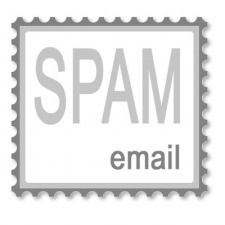261 Broad Street
Windsor, CT 06095
(860) 285-0172
support@invisiblegold.com
Your Website Should Be Easy to Edit
Windsor, CT 06095
(860) 285-0172
support@invisiblegold.com
Your Website Should Be Easy to Edit
Why Am I Getting All Of This Spam Email?
The problem is that it costs next to nothing to send an email to 100,000 addresses; so we all get advertisements from people we've never heard of, for products most of us don't want. In case you’re curious, the term SPAM comes from a Monty Python sketch. Items on a menu are each replaced by the word spam until it’s all that is left: "spam, spam, and spam with spam." It's a good analogy because the problem is getting worse every day: "In 1997, the Coalition Against Unsolicited Commercial Email estimated that spam made up 10 percent of the e-mail sent in America. By the end of 2003, they project it will comprise more than half of all e-mail." - www.massmed.org The good news is that there are things you can do to minimize it: TIP 1 - Take your email address off of your website, or gather feedback a different way. The primary way that spammers gather addresses is by using tools called "email harvesters". These are basically computer programs that surf the Internet looking for new addresses. Your website programmer should know how to use a "form" or "html encoding" to prevent your address from being harvested. Keep in mind that if the address shows in the page's source code, it can still be harvested. (This means that the Microsoft FrontPage and common sendmail.pl forms don't work.) TIP 2 - Don't use your primary email address to post messages to newsgroups or big email lists. Treat it like a credit card. There is no telling who is out there to pick it up. Many of the messages sent to mailing lists are archived and posted on a website, anyway. If you really want to contribute to mailing lists, use an email alias. (See tip #5) TIP 3 - Don't unsubscribe or reply to a spam email. It will just make things worse, and you'll get yet more spam. However, most reputable companies will respect an unsubscribe request. In general, if you’ve never heard of the business and definitely never ordered from them – they are sending you spam so you should not reply. TIP 4 - Think twice before forwarding a chain email. Something may be funny or cute, but it will increase your chance of being added to a spam list. Also, don't follow emailed instructions to install programs or delete files from your computer. There are many viruses and hoaxes that spread via email. (You should also keep your virus scanning software up to date.) Tip 5 - Use multiple email addresses or aliases. It is a good idea to have a personal account, a business account, a spam account, and more. There are even companies that offer "tear-off" accounts that are only used once or expire after a few weeks. Mail Moat offers this service for $20/year. (www.mailmoat.com) Tip 6 – Use features of your email software (Ex: Microsoft Outlook's "Message Rules") to route incoming messages into different folders. Have one rule move email from known addresses to a “customers” folder. Other rules can move "orders" and "website questions" to other folders. You still need to check the inbox occasionally, but it makes it harder to miss an important customer email. Tip 7 - When setting up an email account with a popular company (Ex: Yahoo, Hotmail, AOL), use a long email address. Spammers use brute force methods to systematically send email to ranges of addresses (Ex: aaaaaaa@aol.com to zzzzzzz@aol.com). A long address is harder to guess and will get less spam. TIP 8 – Use a shopping cart if you sell products online. PayPal’s “Buy Now” buttons will expose your email address to the email harvesters. Tip 9 - Make sure your Internet Service Provider (AOL or Connecticut Telephone, or the company you pay to host your website.) filters your email for spam. It won't catch everything and might catch too much, but it's worth a try. Tip 10 - Don't ever visit a website or buy anything advertised in a spam message. If you like the service they are offering, go to a search engine and try to find one of their competitors. While you can’t eliminate the spam problem entirely, following the tips above can help to minimize it. Note: This article was originally featured in the August 2003, edition of the Windsor Business United Newspaper. For more information and the latest tips, contact Invisible Gold. |

